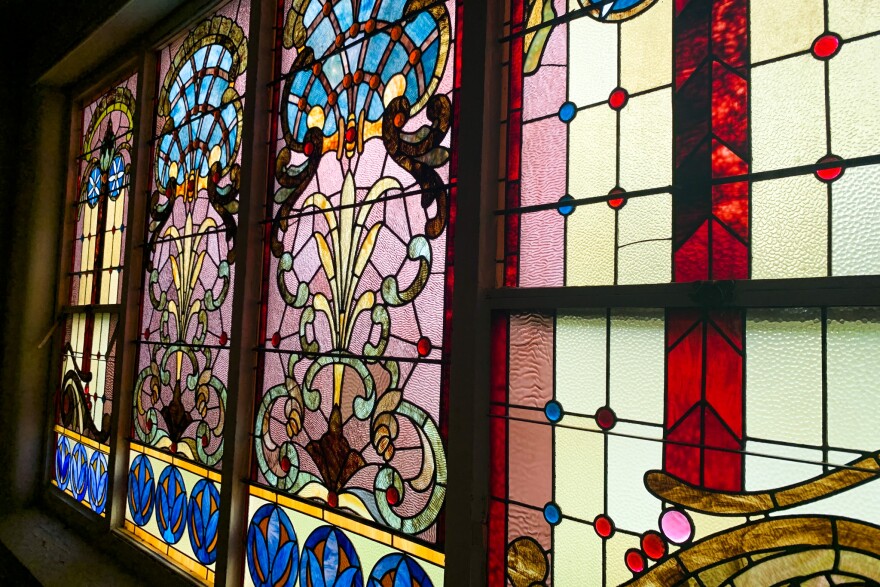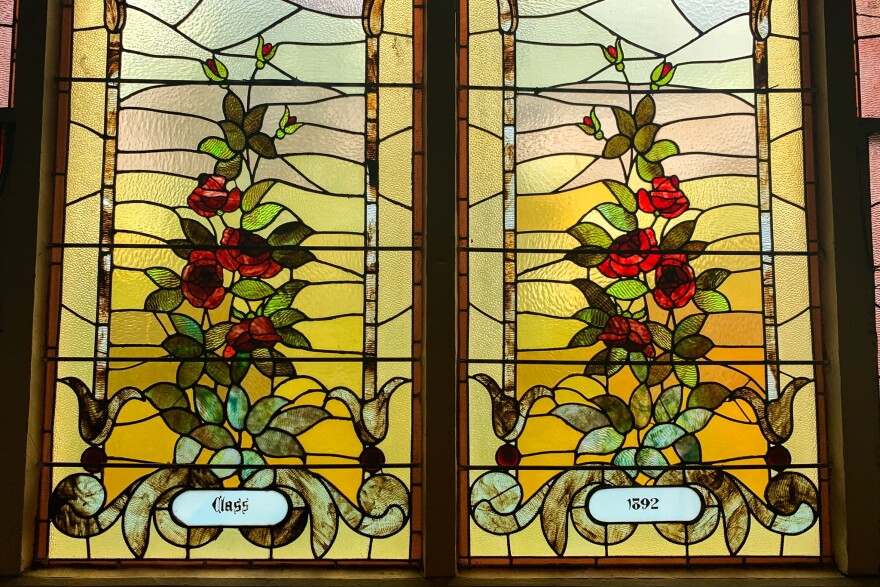If you’ve been to Mount Pleasant’s The Grange Public House and Brewery, you might have run into its admittedly surly brewer, Eric Sorensen.
“I’m not like the guy that puts on the mask of ‘Hey! Hi! How’s it going?' I’m the guy making sure you get the right beer and making sure that you’ve got the right plate you know," he said.
However friendly people do or don't find him, according to The Grange’s owner, Sue Sorensen, her husband Eric is actually the optimist in the couple. And optimism has been important since Iowa Wesleyan University — an important source of business and labor — announced its closure.
According to a study by Hanover Research of Arlington, Virginia, Iowa Wesleyan contributed $55.1 million in annual economic impact to southeast Iowa. This includes exchanging dollars for a pizza order on the small end to the impact of graduating teachers who decide to work in the local school district.
“He’s always the one who is saying it’ll be fine. Everything will work out the way it's supposed to," she said. "I’m the one who is super concerned about what’s going to happen? What’s this town going to look like? What’s our business going to look like?”

In March, Gov. Kim Reynolds denied Iowa Wesleyan request for $12 million in federal American Rescue Plan Act funds. The board of trustees claimed enrollment was trending in the right direction. But without ARPA funding, it didn’t have the time it needed to keep doors open. The board said it would dissolve on May 31.
But months later, the USDA said far from disappearing, the board will be part of finding a new owner.
“At USDA Rural Development, we don't own colleges," said Theresa Greenfield. She's the Biden-appointed state director of the USDA's Rural Development Program.
One of Rural Development’s programs has been investing in “essential” community facilities. This money expanded cancer treatment offerings at a hospital in Shenandoah. It bought new firetrucks and ambulances for Jones County. And it’s how in 2016 Iowa Wesleyan came to owe $26 million to taxpayers through a mortgage and loan guaranteed by the U.S. Dept. of Agriculture.
“Private colleges across the state of Iowa are essential to the economic success of those regions," Greenfield said. For fields like nursing, teaching, law enforcement and child care, she says schools like Iowa Wesleyan have been key for rural towns.
"They (those graduates) want to stay in their rural communities," she said, "and they should be able to do that."
A records request from IPR News showed that the USDA has hundreds of millions tied up just in Iowa higher education. Since 2015 the USDA has loaned $246.06 million to seven Iowa higher ed institutions.
Greenfield says the goal of the program isn’t to turn a profit off its investment. It’s to keep institutions like Iowa Wesleyan around. The university going under is a challenge for the program. That’s why the USDA has been holding meetings in the town to help find a new use and a new owner for the campus.
Rachel Lindeen works in economic development in Mount Pleasant. She says while she’s gotten a lot of calls and questions about the road ahead, there just aren’t many answers at this point.
“We don't know yet what that impact is are they going to be making 50 fewer pizzas a night. We don't know that," she said. "But what we can tell you is those students were staff of many of our local organizations."

Mount Pleasant was first incorporated as a town in 1842, the same year the university was established. The challenge for the town will be separating itself from the university it grew up with.
Kimberly Zarecor is a professor of architecture at the College of Design at Iowa State University. She got funding from the National Science Foundation to study how the quality of life in small towns can be maintained even as they lose population.
Zarecor says the key questions for the communities she works with is the same one she has for Mount Pleasant: What is Mount Pleasant to its residents? The loss of the college is not an end to its community. She says the town’s future is tied to what makes Mount Pleasant a good place to live in the first place.
“Not everyone in Mount Pleasant worked at the university or had their children there, right? There's a whole world of Mount Pleasant that didn't rely on the university," she said. "And that part of the community is going to have to step up and express itself and maybe even become bigger in terms of the community's identity.”
This question comes down to what Mount Pleasant is. This is something residents like Sue Sorensen and her husband will have to figure out with their neighbors.
“I have no idea what this is going to look like in two months because we don’t know what it’s going to look like after all the students are gone," she said. "It’s wait and see, which is so hard for me.”



